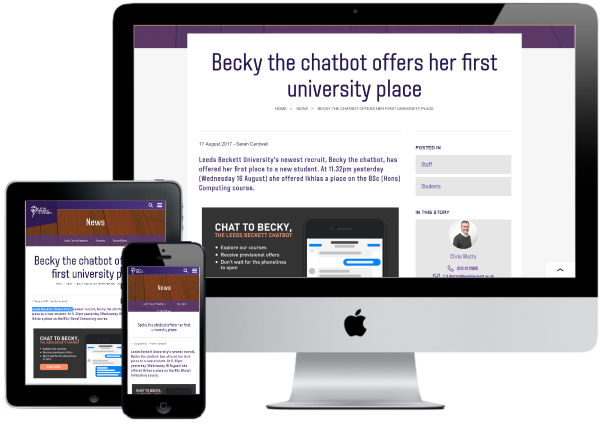Chatbots are now a common sight on the websites of some universities and have started to crop up further afield in higher education.
Powered by Artificial Intelligence (AI), they have the ability to learn on their own. The popular term you'll hear for this is machine learning, a sub-category of AI that enables Chatbot solutions to improve from experience without being explicitly programmed or trained.
It's perhaps no surprise Chatbots have started to appear across higher education digital channels. Research by Gartner predicts that 25 percent of customer service and support operations will use the technology by 2020, up from less than 2 percent in 2017.
AI is evolving quickly and is undoubtedly becoming more accessible to academic institutions.
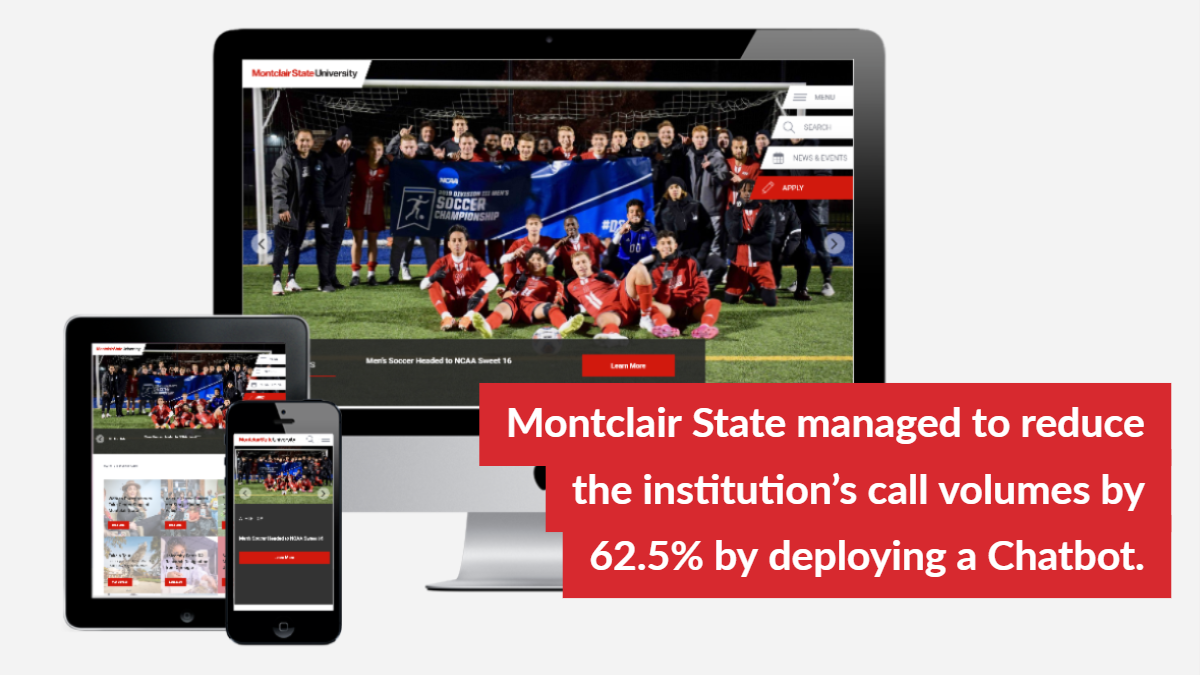
How can Chatbots transform engagement and benefit universities?
One of the reasons for the rising interest in Chatbots is that they save time. Lots of time.
Every day, universities are fielding the same types of questions. "Can you send me a prospectus?" "Where can I get information on financial aid" "How can I get to the campus using public transport?"
The hours invested by staff answering these types of questions, querying other staff and resources and taking appropriate actions to address them are significant.
This is where conversational technology comes into its own, shaving off hundreds of hours of resource time answering repetitive queries so that staff can invest their time on other activities that add value to the student experience.
Turning to prospective students, universities need to act swiftly and precisely when it comes to communications, particularly in the context of heightening competition. When a prospect interacts with the institution the response in terms of speed, tone and accuracy make an impression.
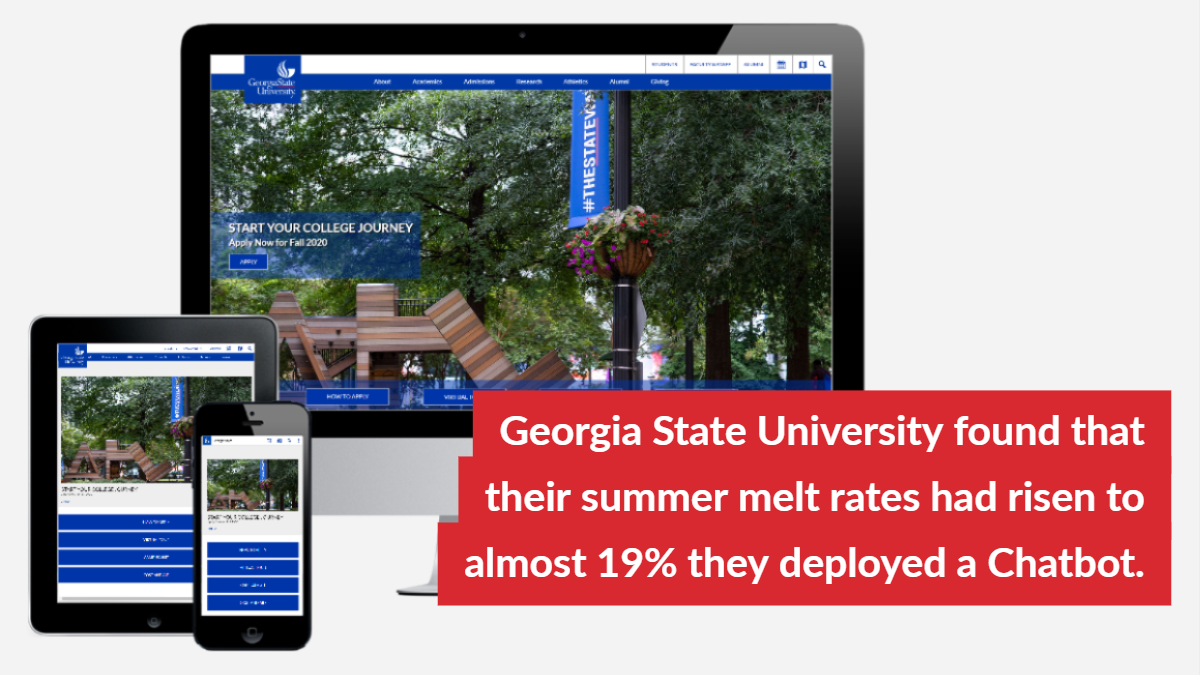
The beauty of Chatbots is that students can interact with them conveniently at any time of the day or night, which is handy for many of us night owls but also particularly beneficial for international students living in different time zones. And conversely, institutions can take some comfort from knowing that the responses going out to students are reliable and consistent and happening round the clock.
As we mentioned earlier, their use is not restricted to just the website. Institutions are thinking beyond the confines of the main university site and deploying Chatbots across a number of their digital channels, including Facebook Messenger, WhatsApp, and other social channels.
And there is another crucial benefit to Chatbots. Data.
As an output from the thousands of interactions with prospective and existing students, they gather huge amounts of rich information.
This data contains incredibly helpful information about student behavior, their information needs and emotions, making Chatbots a valuable tool for reflection and improvement.
Used appropriately, the findings can provide data akin to social listening software. Meanwhile, the data can also fuel the Chatbot service development itself through continuous response improvements, and feed into staff training, and also be used to inform the development of web content. The knock-on benefits are numerous.
The proof of impact: how universities are benefiting from Chatbot technology
The outcomes of implementing a Chatbot solution can be impressive.
Montclair State University, for example, state that they managed to reduce the institution's call volumes by 62.5% by deploying a Chatbot.
When Georgia State University found that their summer melt rates had risen to almost 19% they deployed a Chatbot. Referred to as ‘Pounce', it not only provided accurate answers but also captured the spirit of the school's community and reduced the summer melt effect. Over 200,000 messages were received from students during the trial and only 1% required a staff member intervention. The institution estimates that ten full-time staff members would have been required to turn this volume of inquiries around.
Chatbots are also having an impact beyond student recruitment. Staffordshire University in the UK, for instance, introduced a Chatbot called ‘Beacon' to operate as a digital assistant for existing students which we covered back in July. The Chatbot was created to provide personalized responses relating to timetables and day to day queries, to enable contact with tutors and to increase the speed of communications as well as identifying students who may need further support from staff.

So how should you go about implementing a Chatbot solution at your institution?
As ever, we recommend you take a staged approach to build and launch a Chatbot at your university.
You can choose one or two areas to develop a Chatbot for first and, when you are happy with the outcomes, you can add more questions and answers over time. From there, you can grow the Chatbot's activity into further topic areas, use cases and invoke the Chatbot to interact in more contexts and scenarios.
Here's a high-level step-by-step guide to getting you started.
Step 1: Build a stock of Q&As
The fuel powering any Chatbot is a stock of questions and answers. You may already have a set of FAQs available online that can be leveraged to get an initial bank of queries and responses. But even if you don't, you can tap into the knowledge of your teams to identify the routine inquiries that crop up time and time again.
You can take this bank of questions and import them into a Chatbot service to get you up and running.
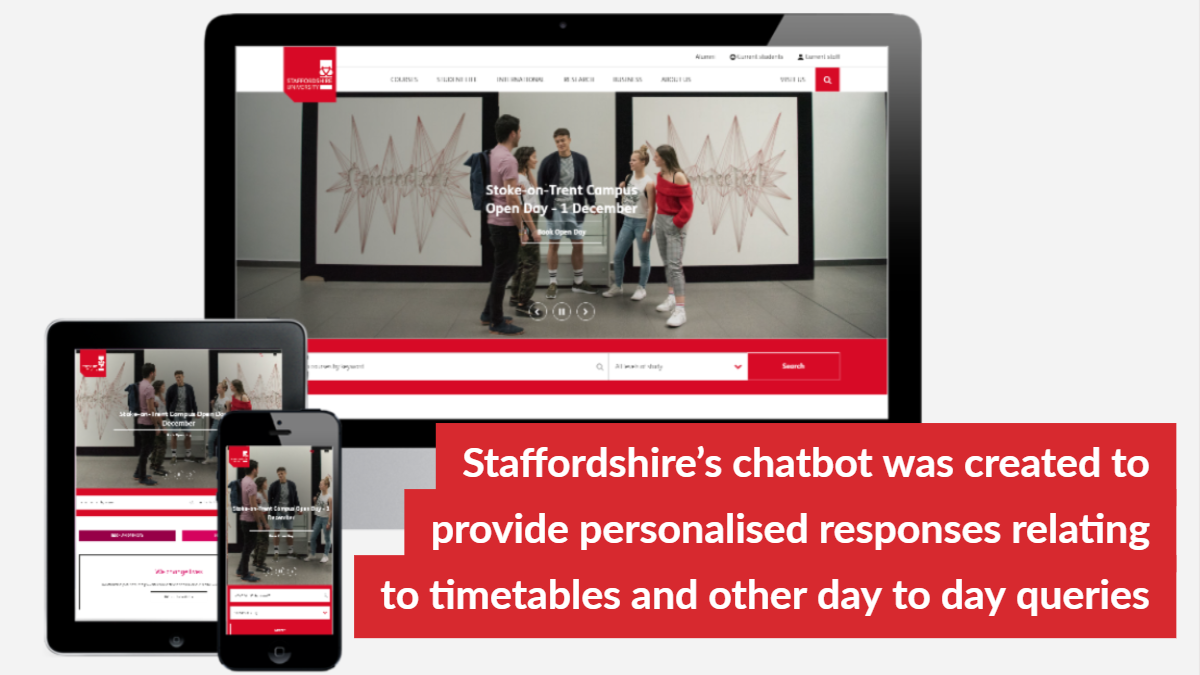
Step 2: Create variants to improve conversational responses
Next, you need to create different iterations of each question.
The conversational format of Chatbots means that people coming to the site will ask the same basic questions in different ways and if you can cater to these variations the results will be more accurate and the interactions will feel more natural. Industry experts recommend at least ten variations for each query but it really depends on how you can resource the development of the Chatbot service.
More quality responses in, naturally means more quality responses out.
Step 3: Train the Chatbot
Over the weeks that follow you should involve your team's collective knowledge to create a more intuitive, intelligent Chatbot that delivers results with greater sophistication.
Get each team member to set aside an hour a day for a couple of weeks, if you can, to train the Chatbot by asking it questions and testing the answers. If the Chatbot doesn't provide the right answer, or can't provide an answer to the question asked, add it to the dataset. If the Chatbot isn't sure but does provide a suggestion, and it's correct, login to the back-end and add that question variation to the dataset.
Over time, the Chatbot will learn these new questions and variations and will use that experience to better answer your visitors' questions on a wider range of topics.
Step 4: Design for handoffs
Chatbots can't resolve all queries and issues, yet. At times, therefore, it makes sense for a member of staff to step into a conversation.
As you will probably have experienced in e-commerce stores, when a Chatbot hits a dead-end in a conversation, it can automatically offer to port the communication thread to a university representative.
It's therefore important to define triaging scenarios to create handoffs that channel more complex queries through to members of the team.
You can train a Chatbot to respond in a defined way to certain keywords and phrases, and you can also alert your team when a Chatbot is initiated on pages which typically result in more complex questions where a human intervention will often have a beneficial impact.
Dealing with the residue of more complex queries in this way clearly makes sense for both the university and student.
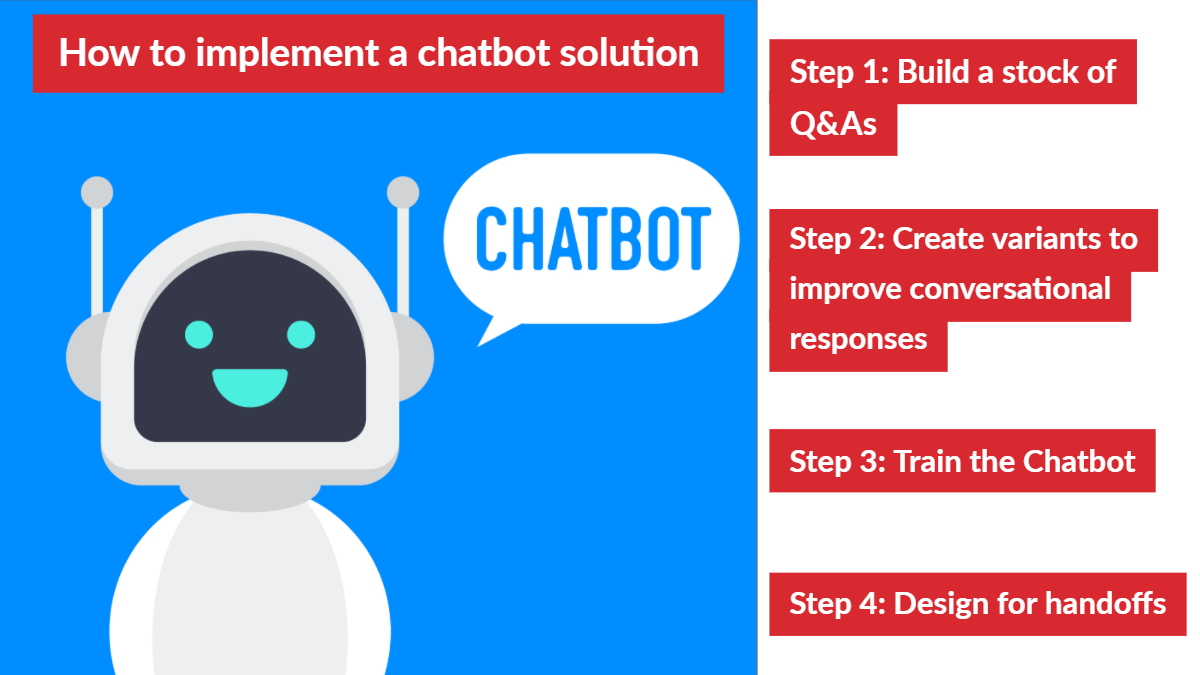
The longer your Chatbot lives the more it can learn
This simple, staged approach to implementing a Chatbot means you can get started quickly and grow your Chatbot's capability over time and with real data.
When a Chatbot is unable to answer a question, in addition to offering a suggestion or sending the user to a human for help, the back-end of your Chatbot solution should also alert you that a low confidence answer was offered.
By checking this frequently, and accepting answers that the Chatbot got right into the dataset and adding new answers for the ones it got wrong, or only partially correct, you can grow your Chatbot's capability and help it to learn.
It's a daily commitment but the investment can be made in the knowledge that you will get more efficiencies elsewhere and you can measure and track the impact should you need to convince senior members of the university of its value.
Chatbots and humans are better together
In so many situations these days we see that the most transformative results are realized when people and machines work well together.
This type of symbiotic working between humans and Chatbot is really effective, especially during times when there are high volumes of inquiries and requests. It can take the pressure off staff who would typically manage every single message that floods their inbox and it gives students access to exactly what they need on-demand.
And Chatbots let you, as an institution, get a better understanding of your students.
And by integrating Chatbot technology with existing CRM or marketing platforms, you can collect vast quantities of very detailed information on an individual level. So that as an organization, you can start to build a very detailed profile of each student, their preferences and their past behaviors, and use this information to improve and personalize any future communications.
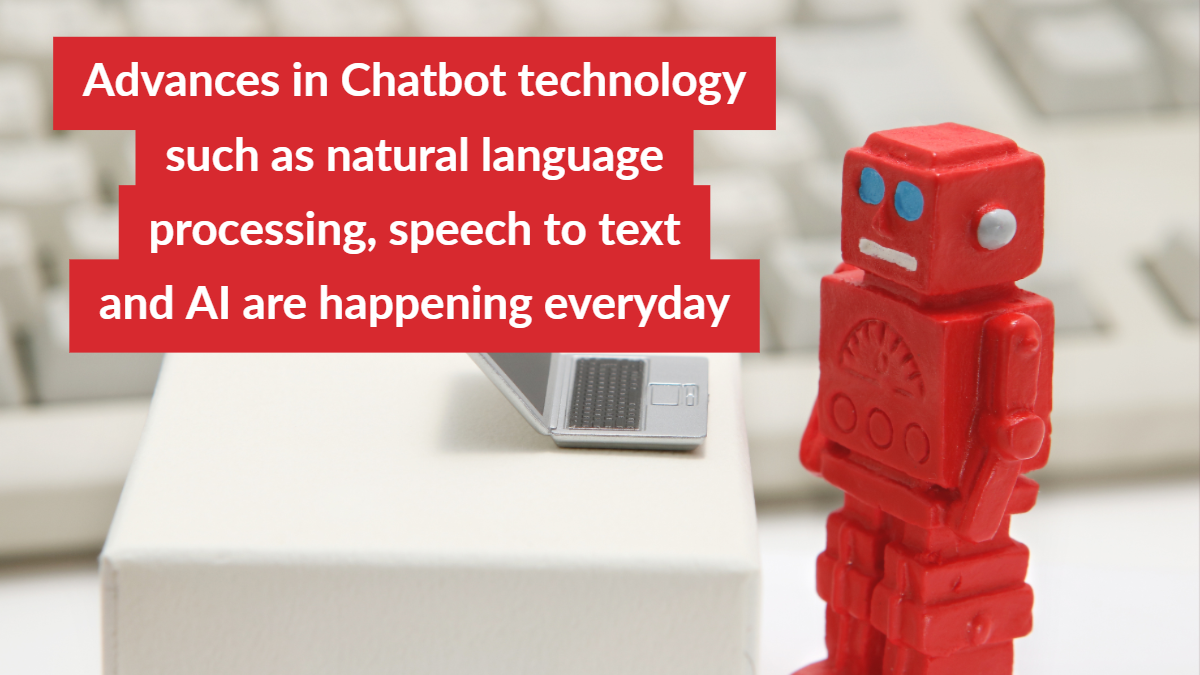
What does the future hold for Chatbots in HE?
Advances in Chatbot technology such as natural language processing, speech to text and AI are happening every day. Meanwhile, conversations with Chatbots are becoming more human-like, more useful and more convenient.
At TerminalFour we think the use of Chatbots will move beyond just being able to provide timely information and into situations where actions can be taken such as lead capture, event registration, referral and so on.
Personalization will also drive the next generation of Chatbots. Not only will Chatbots be able to retrieve personal information, such as grades or account balances, for existing students who are logged in, but they will also talk to students in a more individualized way, perhaps employing humor or references based on the interests of the user or past interactions. Maybe even capturing the tone of voice and personality of institutions.
Chatbots are here to stay
We know that today's students like digital interactions like this, particularly when they are accessible, round the clock and provide good quality responses. Chatbots and LiveChat will become more nuanced, the hand-offs perhaps more discrete and the experience will continue to rise in quality at institutions that invest in this powerful technology.
It's a fast-paced, digitized world where students no longer consider speedy service a ‘nice to have'. Delivering high-quality interactions precisely when and where they want it is not only expected but is key to staying ahead of the competition.
Does your institution have a Chatbot project underway or have you already deployed one? We'd love to hear your experiences and findings.

:format()//media/Chatbots-blog-rq.png)
